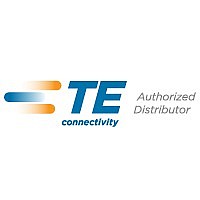1-46673-1 Tyco Electronics, 1-46673-1 Datasheet - Page 4

1-46673-1
Manufacturer Part Number
1-46673-1
Description
TOOL HEAD CRIMP 22-16AWG STRATO
Manufacturer
Tyco Electronics
Series
Strato-Therm™r
Datasheet
1.1-46673-0.pdf
(6 pages)
Specifications of 1-46673-1
Connector Type
Terminals and Splices
Crimp Handle
1213563-1, 1213804
Crimp Or Cable Size
16-22 AWG
Lead Free Status / RoHS Status
Not applicable / Not applicable
5. CRIMP INSPECTION
Inspect crimped terminals and splices by checking the
features described in Figure 7. Use only terminals or
splices that meet the conditions shown in the
“ACCEPT” column. “REJECT” terminations can be
avoided through careful use of instructions in
Section 4, and by performing regular head
maintenance, as described in Section 6.
6. MAINTENANCE AND INSPECTION
Tyco Electronics recommends that a maintenance
and inspection program be performed periodically to
ensure dependable and uniform terminations. The
crimping head should be inspected once a month.
Frequency of inspection should be adjusted to suit
your requirements through experience. Frequency of
inspection depends on:
Each crimping head is thoroughly inspected before
packaging. Since there is the possibility of crimping
head damage during shipment, new crimping heads
No Wire Conductor
Strands Protruding
4 of 6
CAUTION
DANGER
1. The care, amount of use, and handling of the
crimping head.
2. The type and size of the product crimped.
3. The degree of operator skill.
4. The presence of abnormal amounts of dust and
dirt.
5. Your own established standards.
Crimp Centered on
Wire Barrel Sleeve
STRATO-THERM Crimping Heads
Properly Crimped Terminal and Splice
Figure 7
should be inspected immediately upon arrival at your
facility.
6.1. Daily Maintenance
Tyco Electronics recommends that each operator be
responsible for the following steps of daily
maintenance:
6.2. Periodic Inspection
Regular inspections should be performed by quality
control personnel. A record of scheduled inspections
should remain with the crimping heads or be supplied
to supervisory personnel responsible for the crimping
heads. Though recommendations call for at least one
inspection a month, the frequency should be based
on amount of use, working conditions, operator
training and skill, and your established company
policies. These inspections should include a visual
inspection (Paragraph 6.3) and a crimping chamber
inspection (Paragraph 6.5).
6.3. Visual Inspection
DANGER
1. Remove dust, moisture, and other contaminants
with a clean, soft brush, or a lint–free cloth. Do
NOT use objects that could damage the head.
2. Make sure that all pins, rings, and other
components are in place and secure.
3. Make certain all surfaces are protected with a
thin coat of any good SAE 20 motor oil. Do NOT oil
excessively.
4. When the head assembly is not in use, store it
in a clean dry, area.
1. Remove all lubrication and accumulated film by
immersing the crimping head in a suitable
commercial degreaser that will not affect paint or
plastic.
1 Hashmark on
Bottom of Terminal
2 Hashmarks on
Bottom of Splice
408-10033
Rev A





